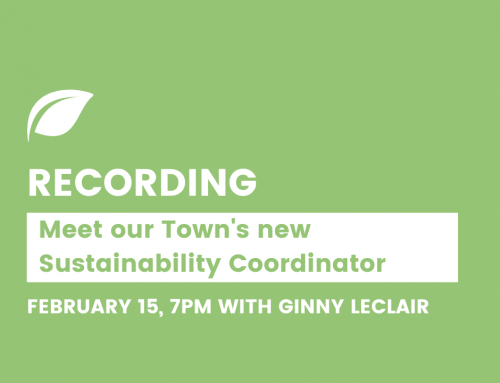by Laurie Freeman
Would you like to hear some great news about climate change? Recent studies including a groundbreaking report by Rewiring America show that we don’t need miracle technologies to address it – we have real solutions now, and if we deploy them rapidly – we can still protect our children from the worst effects of climate catastrophe and preserve a livable planet for them and future generations. We also don’t need to sacrifice and upend our lives. These mitigation measures will dramatically improve our quality of life, clean up our polluted air, create millions of good local jobs, reduce our energy costs and shut down dirty fossil plants poisoning low-income communities. The most empowering news of all? Households can drive down roughly half of the planet warming emissions alone, by transitioning to electric powered homes and vehicles and connecting to a rapidly decarbonizing electric grid, fueled by renewables, now the lowest cost new energy source nationally. It is infinitely cheaper to save the planet than to destroy it.
These new developments provide a critical ray of hope as we barrel down the expensive path of fossil burning destruction. 2020 tied (with 2016) for the hottest year ever recorded. The last 7 years are the hottest 7 years ever recorded. This last decade was the hottest decade ever recorded. We’ve all seen the extreme and lethal weather events occurring with increasing frequency and devastating consequences, with yearly “100 year” mega storms, record breaking fires, droughts, heat waves, chronic flooding. The most recent report released by the Intergovernmental Panel on Climate Change, the international body charged with assessing and reporting on the latest climate data warned that we must rapidly reduce our global warming emissions 50% within the next decade and 100% by 2050 to stay within 1.5 to 2 degrees Celsius warming, the most promising scenario for avoiding irreversible climate chaos. Consider this: approximately half the emissions currently in the atmosphere were released in the last 30 years – basically we adults are poised to be the first generation in human history to destroy our habitat. But if we act rapidly, we may be able to avert worst case scenarios.
We have the technology today, shovel-ready, to rapidly decarbonize our energy use: electrify nearly everything in the building and transportation sector and power our electric grid with existing nuclear and renewables. The idea is that as our fossil fuel energy systems age, we replace them with electric alternatives. These products generally have superior performance to their fossil counterparts. The latest technologically advanced heat pumps (which provide heat and AC) are super-efficient, quiet, and can be installed for temperature selection in each room. Induction stoves, which use electromagnetic energy to generate heat, offer precise temperature control down to the lowest levels – no more scorching your sauces or burning the butter, and they boil water in half the time of gas, among many other advantages. Your family also doesn’t breathe in the toxic fumes emitted from a gas range which current studies are revealing often exceed EPA outdoor regulatory limits and cause 42% of children to be more likely to suffer from asthma. Electric vehicles will reduce air pollution, are zippier, quieter, need little maintenance and even at today’s inflated prices (prior to widespread adoption) cost of ownership is still less expensive than internal combustion engine once you factor in the fuel and maintenance. Solar panels will save you money and give you 100 % clean energy.
The real challenge is not the technology and cost, but how to implement this massive infrastructure transformation at the speed and scale required. We could have decarbonized with normal market incentives and transitioned at a slower pace if we’d heeded earlier the decades of scientific warnings regarding climate breakdown. We are now out of time and have just under a decade to try and reach 50% adoption rate of clean electric buildings and vehicles. This will require massive investment and coordination at the federal, state and local level and reversing incentives that currently favor fossil fuels (from federal subsidies, to local building codes).
The great news is we have accomplished extraordinary achievements like this before. As entrepreneur Saul Griffith, at the non-profit Rewiring America points out in his climate “Handbook,” the U.S. has a record of solving enormous problems with massive targeted government funding that results in a stronger more prosperous U.S economy. JFK challenged our science and tech industry to put a man on the moon in under a decade and we succeeded with the Apollo program. During World War II, FDR leveraged industry innovation and resources by providing the capital plus 7% profit to companies that fueled the “Arsenal of Democracy.” In 1939 our GDP was $100 billion and we spent $186 billion in 6 years to churn out world-dominating military hardware to help defeat the Axis. Three years later, our GDP doubled. A proportional investment to address climate change today relative to our GDP would be $39 trillion. It will cost comparatively less to decarbonize our energy infrastructure, with much more at stake.
We also can look to past federal government innovation for financing electric upgrades for homes and vehicles. The enormously successful government-backed home mortgage introduced in the 1930s launched widespread homeownership and a flourishing middle class (a white middle class, it must be noted, as black people were explicitly excluded by the government for decades and still face mortgage discrimination today). Low-interest “Climate Loans,” an innovation suggested by Griffith, could be similarly used to make the capital costs of EVs, heat pumps, solar panels, electric appliances affordable to all households, with targeted outreach to communities of color which disproportionately suffer the health effects of fossil fuel emissions. The generous federal investments in industry during the war proved to be the greatest jobs program in U.S. history which reaped economic dividends for decades. Transforming our energy system through electrification and investing in our manufacturing base and renewable energy will create an estimated 25 million jobs; 10 million permanent positions in manufacturing, financial services, and the trades which cannot be outsourced.
It is essential that we have a President and Congress that will partner with our business community to rapidly decarbonize and build out our electric grid with renewables. President Biden’s new Infrastructure package “The American Jobs Plan” is visionary in its focus on reinvesting in our country and addressing climate change but must get through Congress with the funding intact for us to have a chance at achieving 50% emissions reductions in a decade. Contacting our political leaders and representatives in support of rapid science based emissions reductions is a top priority. In Hingham the most impactful measures we can take are to electrify our homes and cars, procure 100 % renewable electricity from our town-owned light plant, and implement a climate action plan to achieve zero emissions in buildings and transportation. We can now vote on the two warrant articles to develop a Climate Action Plan for Hingham at the upcoming Town Meeting taking place at Hingham High School, May 8th at 2:00 PM. I have so much hope now (and a long to do list) with this data-driven and realistic, if challenging, roadmap to save the planet for our children.





